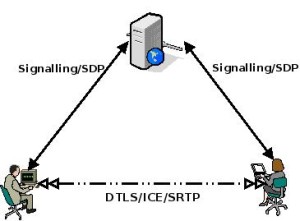WebRTC promises to greatly simplify the development of multimedia realtime communications, without the need to install an application or browser plug-in. It enables this by exposing a media engine and the network stack through a set of specialised APIs. Application developers can use these APIs to easily add realtime communication to web applications. The defined […]
What’s in a WebRTC JavaScript Library?
Looking over the past few years of WebRTC growth, and the landscape of emerging WebRTC solutions, we see quite a number of WebRTC-centric JavaScript (JS) libraries on the scene. Indeed, not long after browser vendors began shipping WebRTC implementations, a bouquet of WebRTC signaling libraries bloomed. Each delivers a JavaScript API surface in the browser, which provides […]
How to use WebRTC and Chrome Extensions to Call a Browser When it is Not Open (Konstantin Goncharuk)
Ring! Sometimes you need an alert to get your attention. Traditional phone systems make this easy – if someone calls you your phone rings. The traditional telephony model assumes the called device is always on an available to ring and this is how it generally works across analog phones, mobiles, VoIP phones, and even desktop […]
The IMS approach to WebRTC
The first post we published on webrtcHacks was ‘A Hitchhiker’s Guide to WebRTC standardization’ (July 2013) where we gave some initial insight on activities in the 3GPP around WebRTC and IMS. Since then the situation has certainly evolved (well, probably not as fast as some would have expected). Since we regularly receive emails asking about […]
What is a WebRTC Gateway anyway? (Lorenzo Miniero)
As I mentioned in my ‘WebRTC meets telecom’ article a couple of weeks ago, at Quobis we’re currently involved in 30+ WebRTC field trials/POCs which involve in one way or another a telco network. In most cases service providers are trying to provide WebRTC-based access to their existing/legacy infrastructure and services (fortunately, in some cases it’s […]




